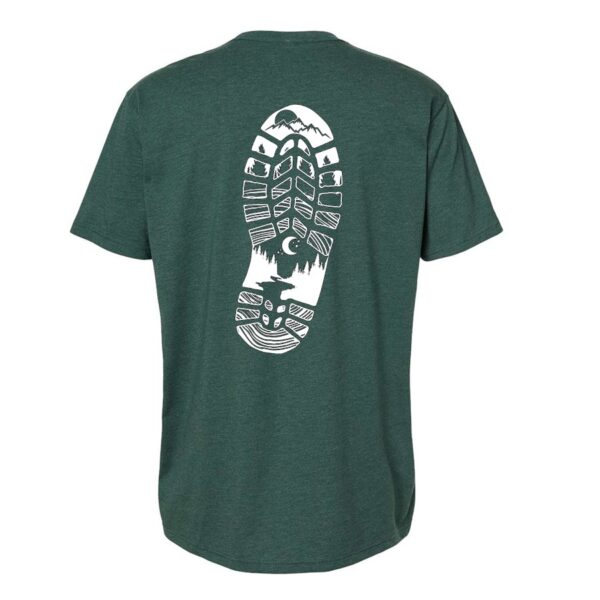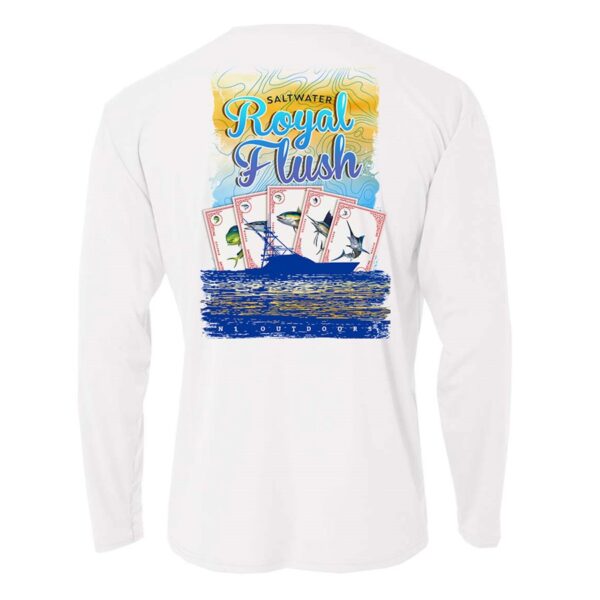Wakesurfing, a water sport that has been gaining immense popularity in recent years, is a combination of surfing and wakeboarding. Wakesurfing involves riding the wake behind a boat without being attached to it, using a specialized board. The sport of wakesurfing is gaining popularity due to its easy learning curve and the thrilling experience it provides.
In this guide, we will cover the basics of the sport, the equipment needed, and the techniques required to surf the wake successfully. Whether you are a seasoned surfer or a complete beginner, this article will provide you with the knowledge and confidence to hit the water and start wakesurfing!
Gear Essentials for Wakesurfing
Wakesurfing is an exciting water sport that requires the right gear to ensure safety and maximize fun. Below are some essential gear items that every beginner should consider before hitting the water.
How to Choose the Right Wakesurf Board Type
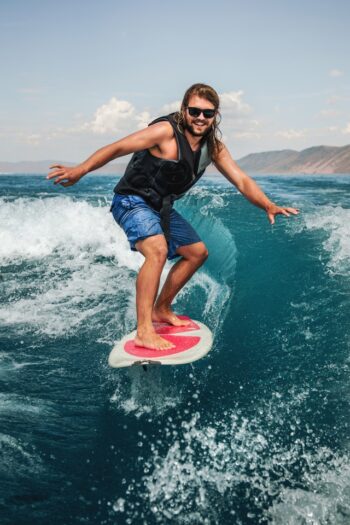
Beginners should opt for wider and longer boards, as they provide better stability and buoyancy. As riders progress, they can switch to smaller, more maneuverable boards with less volume. Additionally, the board’s flex and rocker are important factors to consider, as they affect the board’s speed, agility, and responsiveness.
Choosing the right wakesurf board is crucial for a successful and enjoyable experience.
Wakesurf boards come in different sizes, shapes, and brands, and selecting the right one depends on the rider’s skill level, weight, and riding style.
The Importance of a Proper Tow Rope and Handle
A proper tow rope and handle are essential for wakesurfing, as they provide the necessary tension and control to ride the wake.
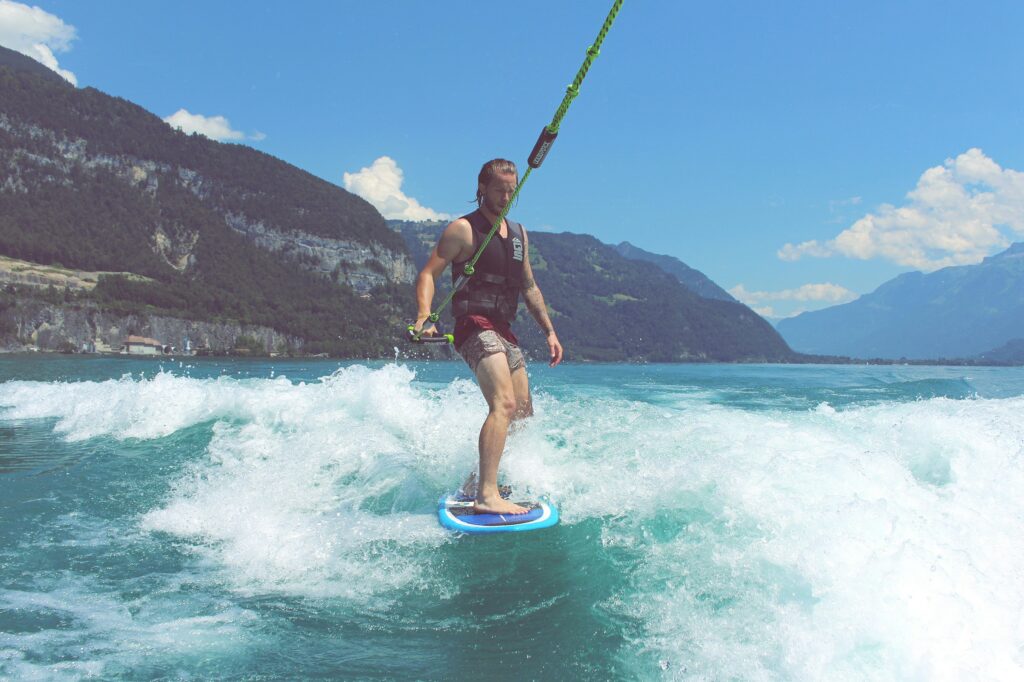
Wakesurfing ropes are different from regular water skiing ropes, as they are shorter, thicker, and have less stretch. A wakesurf-specific rope is recommended, as it has a smaller diameter and less drag, which allows for smoother and more controlled rides. The tow rope’s length should be adjusted based on the rider’s skill level and the boat’s speed, with shorter ropes for beginners and longer ropes for advanced riders.
Other Essential Gear
In addition to a wakesurf board and tow rope, there are other required equipmaent items that every wakesurfer should have.

A life jacket or personal flotation device (PFD) is mandatory for safety reasons, and it should fit snugly and comfortably.
A helmet is also recommended, especially for beginners or riders attempting advanced tricks. Wetsuits or rash guards are useful for colder water temperatures or prolonged exposure to the sun.
Finally, it’s essential to have proper safety gear, such as a first aid kit and a whistle, in case of emergencies.
Understanding the Boat Setup
When it comes to wakesurfing, understanding the boat setup is crucial for a successful and safe ride. Here are some important factors to consider:
The Role of the Boat Driver and Spotter
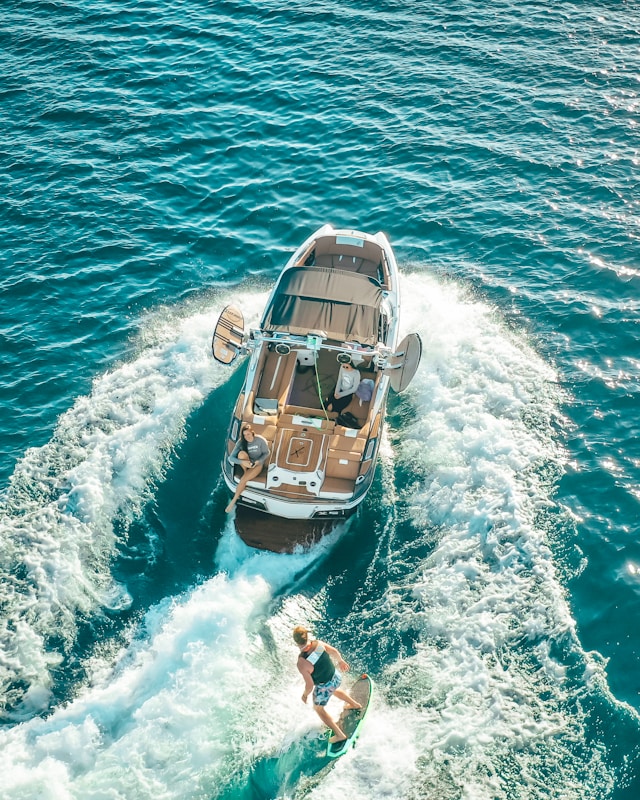
The boat driver plays a crucial role in wakesurfing. It is their responsibility to maintain a steady speed and keep the boat on a straight path. The spotter, on the other hand, is responsible for keeping an eye on the rider and communicating with the driver to adjust speed and direction as needed.
Proper Boat Speed and Weight Distribution
The speed of the boat is a crucial factor in wakesurfing. The ideal speed for wakesurfing is typically between 10 and 12 mph, depending on the rider’s skill level and the boat’s weight distribution.
Speaking of weight distribution, it is important to evenly distribute weight throughout the boat to create a clean and consistent wake. Ballast weights can also be used to adjust the boat’s weight distribution and create a larger wake.
Safety Precautions to Observe on the Boat
Safety should always be a top priority when wakesurfing. All riders should wear a properly fitting life jacket or personal flotation device (PFD) at all times.
It is also important to make sure that the boat’s speakers and music do not interfere with the driver’s ability to hear the spotter’s instructions.
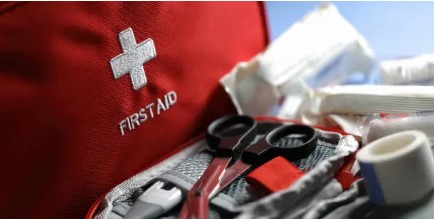
As part of your safety precautions when wakesurfing, your boat should have a first aid kit.
Additionally, the boat should be equipped with all necessary safety equipment, such as a fire extinguisher and first aid kit. Finally, it is important to observe all safety precautions when entering and exiting the boat.
Learning the Basics of Wakesurfing
Wakesurfing is a fun and exciting water sport that is gaining popularity among water enthusiasts. However, for beginners, it can be a challenging experience. Learning the basics is crucial to ensure that you have an enjoyable and safe experience on the water.
How to Get Up on the Wakesurf Board
The first step in wakesurfing is to get up on the board. The rider should start in the water with the board perpendicular to the boat. The rider should hold the rope with both hands, keeping their arms straight. The rider should then slowly stand up, keeping their knees bent and their weight centered over the board. As the boat accelerates, the rider should allow the boat’s pull to lift them out of the water.
Finding the Sweet Spot in the Wake

Once the rider is up, they need to find the sweet spot in the wake. The sweet spot is the area of the wake that provides the best push for the rider. The rider should position themselves slightly behind the boat’s center and adjust their position until they feel the best push from the wake. This may take some practice to find the right spot.
Maintaining Balance and Stance While Wakesurfing
Maintaining balance and stance is essential to staying on the board. The rider should keep their weight centered over the board and their knees bent. Keep chest up and shoulders back, leaning slightly back to maintain control.
It is essential to keep the board parallel to the water’s surface to maintain balance.
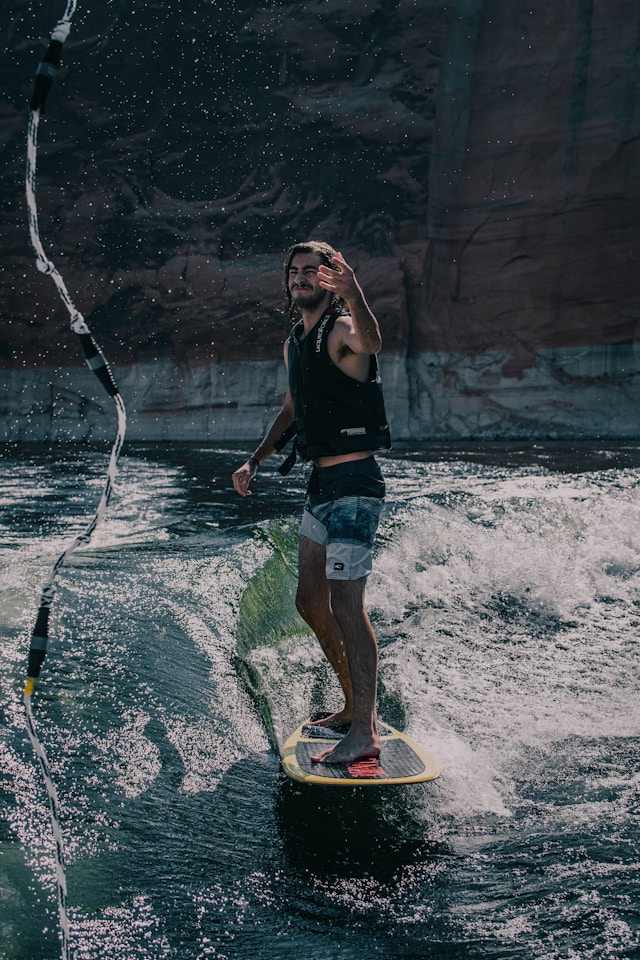
Once you are in good control on the wake, it’s time to toss that rope! You can toss toward the boat or over the side of the wake.
Progressing Your Wakesurfing Skills
Once a beginner has mastered the basics, they can start to work on advancing their skills. This section covers some techniques and tricks that can help take your wakesurfing to the next level.
Turning Techniques: Carving and Slashing
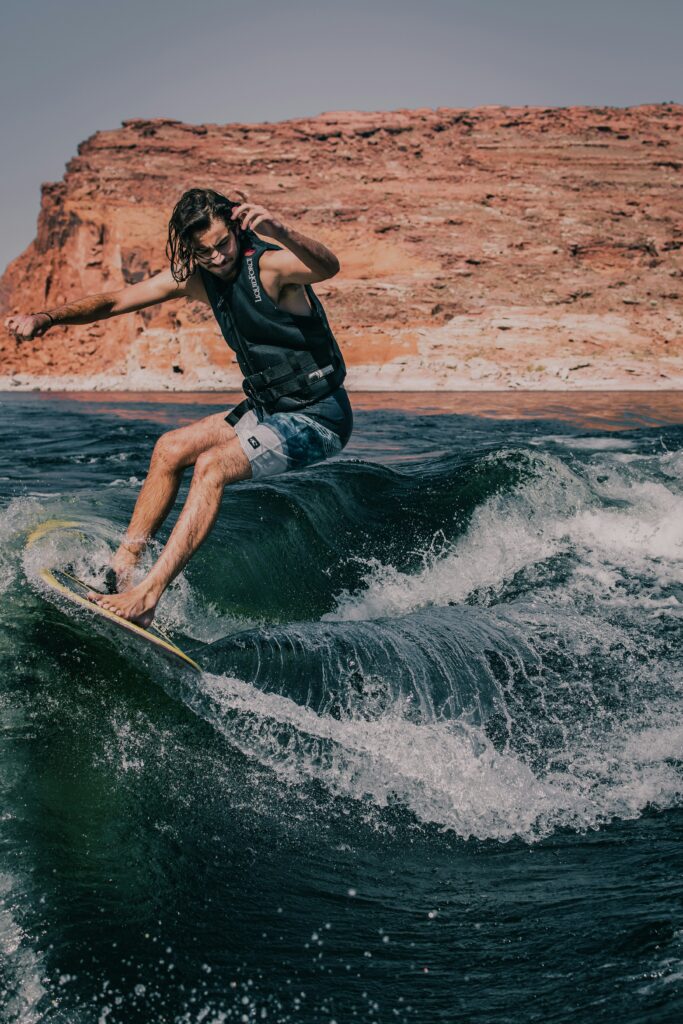
To improve control and maneuverability on the wave, wakesurfers can practice carving and slashing. Carving involves using the board’s edge to cut into the wave and turn. Slashing, on the other hand, involves using the board’s tail to spray water and change direction. Practicing these techniques can help wakesurfers gain confidence and control on the wave.
Basic Tricks: Ollies, Shuvits, and Grabs
Once a wakesurfer has mastered the basics, they can start to work on some simple tricks.
Ollies involve jumping off the wave and back on, while shuvits involve spinning the board underfoot. Grabs involve grabbing the board while in the air. These tricks can add some flair to a wakesurfing session and help wakesurfers progress their skills.
Gradually Increasing Speed and Wave Size
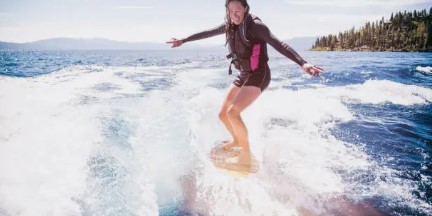
As wakesurfers become more confident and skilled, they can start to gradually increase the speed and wave size. This can help wakesurfers perform more advanced tricks and maneuvers. However, it’s important to remember to always practice in a safe and controlled environment, and not to push beyond one’s skill level too quickly.
Safety Tips and Etiquette
Wakesurfing is an exciting water sport that can be enjoyed by beginners and experts alike. However, safety should always be a top priority. In this section, we will discuss some important safety tips and etiquette that every wakesurfer should know.
Wakesurfing Etiquette
Wakesurfing etiquette is all about respecting other wakesurfers and water users. Here are some basic rules to follow:
- Always be aware of your surroundings and other boats on the water.
- Avoid making repetitive passes in the same area, as this can create a dangerous situation for other water users.
- Respect the rights of other boaters and water users, and give them plenty of space.
- If you are new to the sport, consider taking a lesson or practicing in a designated area.
Safety Precautions for Falls and Collisions
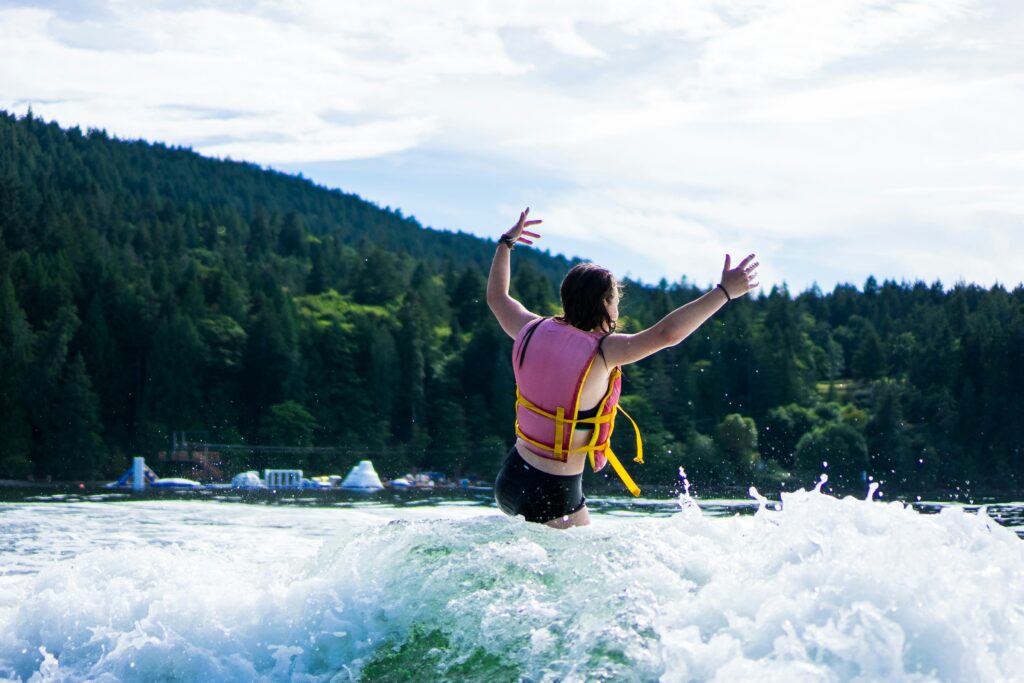
Falls and collisions are common in wakesurfing, but there are some precautions you can take to minimize the risk of injury:
- Wear a life jacket and helmet. These will help protect you in the event of a fall or collision.
- If you fall, try to fall away from the wake and the boat. This will help reduce the risk of getting hit by the board or the boat.
- If you are approaching another wakesurfer or boat, slow down and give them plenty of space. This will help prevent collisions.
Understanding and Respecting Local Regulations
Different waterways may have different regulations when it comes to wakesurfing. It is important to understand and respect these regulations to ensure the safety of all water users. Here are some things to keep in mind:
- Check local regulations before wakesurfing in a new area.
- Follow any speed limits or no-wake zones in the area.
- Respect the rights of other water users, including swimmers, kayakers, and other boaters.
- If wakesurfing in the ocean, be aware of any local hazards, such as rocks or reefs.
By following these safety tips and etiquette rules, wakesurfers can enjoy this exciting sport while minimizing the risk of injury or accidents.
Troubleshooting Common Beginner Mistakes
Common Wakesurfing Errors (Stance and Balance)
One of the most common mistakes beginners make when wakesurfing is not having the correct stance or balance.
It’s important to have a strong, stable stance on the board to maintain control and balance. Beginners often make the mistake of standing too straight or bending their knees too much, which can cause them to lose balance and fall off the board.
To avoid this, beginners should try to maintain a relaxed stance with their knees slightly bent and their weight evenly distributed over both feet. They should also keep their eyes focused on the boat and the wake, rather than looking down at their feet.
Tips for Overcoming Fear and Building Confidence
Wakesurfing can be intimidating for beginners, especially if they have never done any type of surfing before. Fear and lack of confidence can cause beginners to hesitate or make mistakes, which can lead to falls and injuries.
To overcome fear and build confidence, beginners should start by practicing in calm, flat water before moving on to bigger wakes. They should also start with a slower boat speed and gradually increase it as they become more comfortable.
It’s also important for beginners to have a positive mindset and not be too hard on themselves if they make mistakes. Wakesurfing takes practice and patience, so beginners should give themselves time to learn and improve.
Conclusion: Embracing the Wakesurfing Lifestyle
To fully embrace the wakesurfing lifestyle, it’s important to invest in quality equipment and safety gear, such as a wakesurf board, tow rope, life jacket, and boat. It’s also important to learn the basics of wakesurfing, such as proper body position, weight distribution, and boat speed.
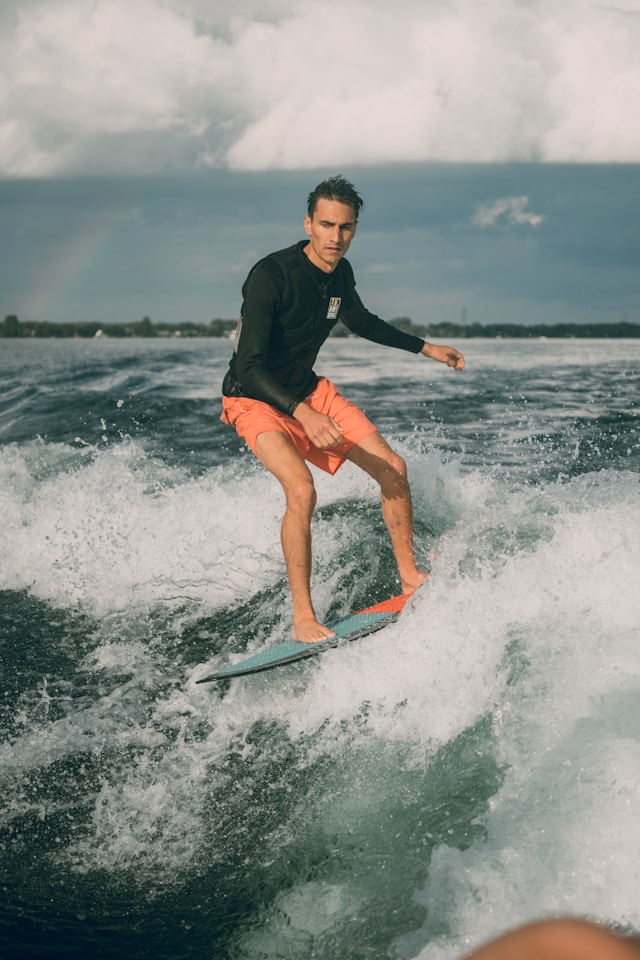
Wakesurfing is not just a sport, but a lifestyle that can bring you closer to nature and the water. It’s a great way to spend time with friends and family, enjoy the sun and fresh air, and challenge yourself physically and mentally.
Once you have the basics down, don’t be afraid to experiment and try new tricks and techniques. Wakesurfing is a constantly evolving sport, with new tricks and styles emerging all the time. Whether you prefer a laid-back, cruisy ride or an adrenaline-fueled, high-intensity session, there’s something for everyone in wakesurfing.
Finally, remember to respect the water and the environment. Always follow local laws and regulations, and be mindful of other boaters and water users. With the right attitude and approach, wakesurfing can be a fun, rewarding, and sustainable way to enjoy the water and the outdoors.










